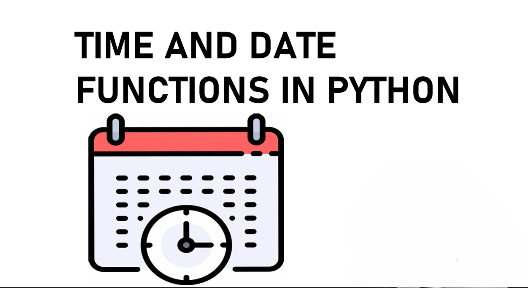Introduction:
In the dynamic realm of Python programming, understanding and manipulating dates and times are essential skills. Despite the absence of a dedicated date data type in Python, the datetime module emerges as a powerful tool for managing temporal information. In this comprehensive blog post, we’ll embark on a journey through the intricacies of the datetime module, exploring how it enables developers to effortlessly work with dates as date objects.
Unveiling the Current Date and Time:
Our exploration begins by importing the datetime module and uncovering the current date and time. Delving into the example code reveals not only the basic details like year, month, and day but also delves into the finer nuances such as hour, minute, second, and microsecond.
import datetime
cogxta_time = datetime.datetime.now()
print(cogxta_time)
# Output: 2021-11-16 20:00:40.080871

Navigating Date Object Methods:
The datetime module offers a plethora of methods for extracting valuable information from date objects. In the sections to come, we’ll delve into various methods. As a glimpse, the example showcases retrieving the year and unveiling the name of the weekday.
import datetime
cogxta_time = datetime.datetime.now()
print(cogxta_time.year)
# Output: 2021
print(cogxta_time.strftime("%A"))
# Output: Tuesday
Crafting Date Objects with Precision:
Creating date objects with the datetime() class is a fundamental skill. This segment illustrates the process, emphasizing the parameters: year, month, and day. While optional parameters like time and timezone exist, we focus on the essentials.
import datetime
cogxta_time = datetime.datetime(2018, 2, 21)
print(cogxta_time)
# Output: 2018-02-21 00:00:00
Elevating Display with strftime() Formatting:
The datetime object introduces the strftime() method, empowering developers to format date objects into human-readable strings. The example below showcases transforming a date to display the full name of the month.
import datetime
cogxta_time = datetime.datetime(2018, 6, 1)
print(cogxta_time.strftime("%B"))
# Output: June
Beyond the Basics – Exploring Advanced Concepts:
As we progress, this blog transcends the fundamentals, delving into advanced concepts within the datetime module. Topics such as time zones, timedelta, and combining date and time are unraveled, providing readers with a holistic understanding of temporal manipulation in Python.
| Function | Description |
| time( ) | Returns the time in floating point number in seconds |
| ctime( ) | Returns the current date and time |
| sleep( ) | Stops execution of a thread for the given duration |
| localtime( ) | Returns the date and time in time.struct_time format |
| gmtime( ) | Returns time.struct_time in UTC format |
| mktime( ) | Returns the seconds passed since epochs are output |
| asctime( ) | Returns a string representing the same |
Table: syntax for time operation
Conclusion:
This blog serves as your comprehensive guide to mastering date and time handling in Python using the datetime module. Whether you’re a beginner exploring the basics or an experienced developer seeking advanced insights, the datetime module equips you with the tools needed for effective date and time manipulation in Python. Dive in, explore, and empower your projects with precise temporal control.


Leave a Reply